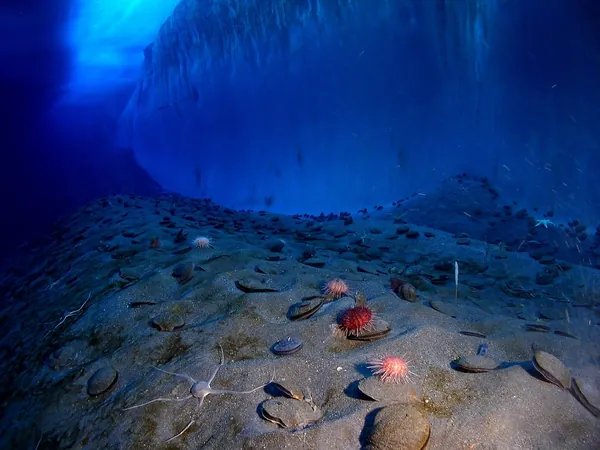
Groundbreaking Discovery of 'Dark Oxygen' on the Ocean Floor Could Revolutionize Our Understanding of Life and Resources
2025-03-23
Author: Yu
Introduction
In a remarkable breakthrough, scientists have unveiled the existence of 'dark oxygen' in the abyssal depths of the ocean—an astounding revelation that could reshape our understanding of both Earth’s ecosystems and the search for extraterrestrial life!
The Discovery
For years, researchers believed that oxygen production was strictly a function of photosynthesis, occurring only in illuminated waters. However, recent experiments have shown that oxygen can be produced in total darkness—far beneath the surface where sunlight cannot penetrate.
The discovery took root in 2013 during a study focusing on carbon cycling in the Clarion-Clipperton zone of the Pacific Ocean. A remote-operated lander deployed to depths of 4,000 meters returned with an unexpected surprise: bubbles inside the equipment. Skeptical of their significance, the initial findings were largely ignored until a return in 2021 provided fresh insights. Oxygen sensors, instead of showing oxygen consumption as expected, revealed that oxygen was being produced—an astonishing contradiction to long-standing scientific beliefs.
Mechanism of Dark Oxygen Production
Further investigation has led researchers to theorize that polymetallic nodules—rock-like formations rich in metals like manganese—may play a role in generating voltage sufficient to split seawater into hydrogen and oxygen. A related study from China has supported this notion, indicating that oxygen can be formed during the creation of these nodules.
Implications for Life and Astrobiology
The implications of this finding extend far beyond deep-sea exploration. Scientists are currently examining whether this process could sustain microbial life in environments devoid of sunlight. This breakthrough could even inform future astrobiological studies, particularly in the context of moons like Enceladus and Europa, where icy crusts prevent sunlight from reaching subsurface oceans.
Future Research Directions
In the coming months, the research team plans to deepen their studies in the central Pacific Ocean with custom-built autonomous vehicles capable of exploring depths up to an unimaginable 11,000 meters—one of the last frontiers on Earth. These missions could illuminate the interactions between dark oxygen production and microbial ecosystems, providing insights into both biodiversity and climate change impacts in the deep sea.
Commercial Ramifications and Ecological Considerations
Moreover, the discovery of dark oxygen may carry significant ramifications for the burgeoning deep-sea mining industry. The extraction of polymetallic nodules, crucial for the production of lithium-ion batteries, raises important ecological questions regarding the health and sustainability of these fragile ecosystems. As researchers delve into the impact of mining on dark oxygen production and the surrounding habitats, it becomes increasingly vital to establish protective measures for the seafloor.
Conclusion
As scientists embark on this exciting journey, the quest for answers is just beginning. Each discovery opens the floodgates to new possibilities, encouraging a sense of wonder and the eternal question: “Why?” This revelation not only fuels scientific inquiry but also inspires a generation to explore the mysteries of our planet and beyond! Stay tuned for what could be the next giant leap in our understanding of life and the universe!




 Brasil (PT)
Brasil (PT)
 Canada (EN)
Canada (EN)
 Chile (ES)
Chile (ES)
 Česko (CS)
Česko (CS)
 대한민국 (KO)
대한민국 (KO)
 España (ES)
España (ES)
 France (FR)
France (FR)
 Hong Kong (EN)
Hong Kong (EN)
 Italia (IT)
Italia (IT)
 日本 (JA)
日本 (JA)
 Magyarország (HU)
Magyarország (HU)
 Norge (NO)
Norge (NO)
 Polska (PL)
Polska (PL)
 Schweiz (DE)
Schweiz (DE)
 Singapore (EN)
Singapore (EN)
 Sverige (SV)
Sverige (SV)
 Suomi (FI)
Suomi (FI)
 Türkiye (TR)
Türkiye (TR)
 الإمارات العربية المتحدة (AR)
الإمارات العربية المتحدة (AR)